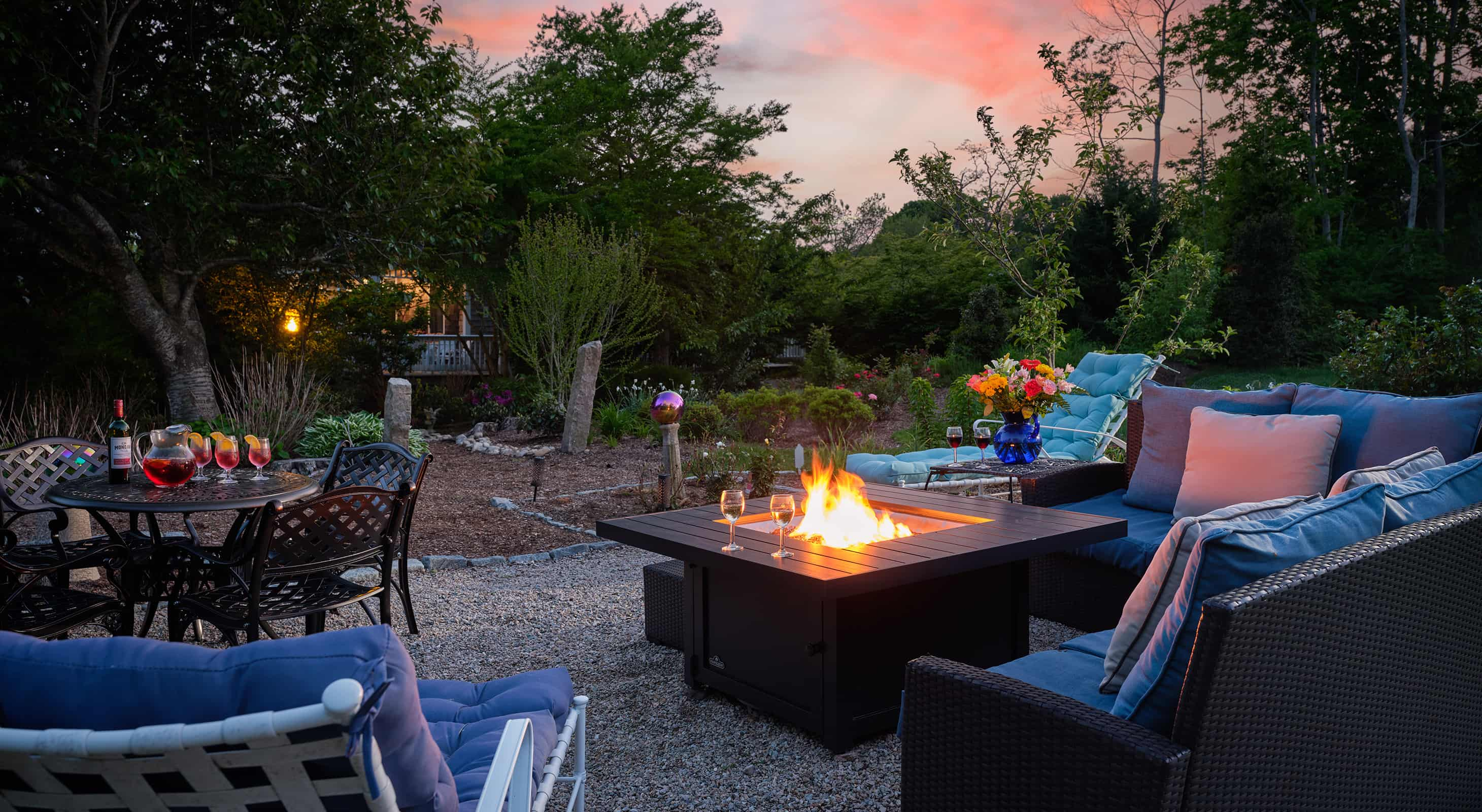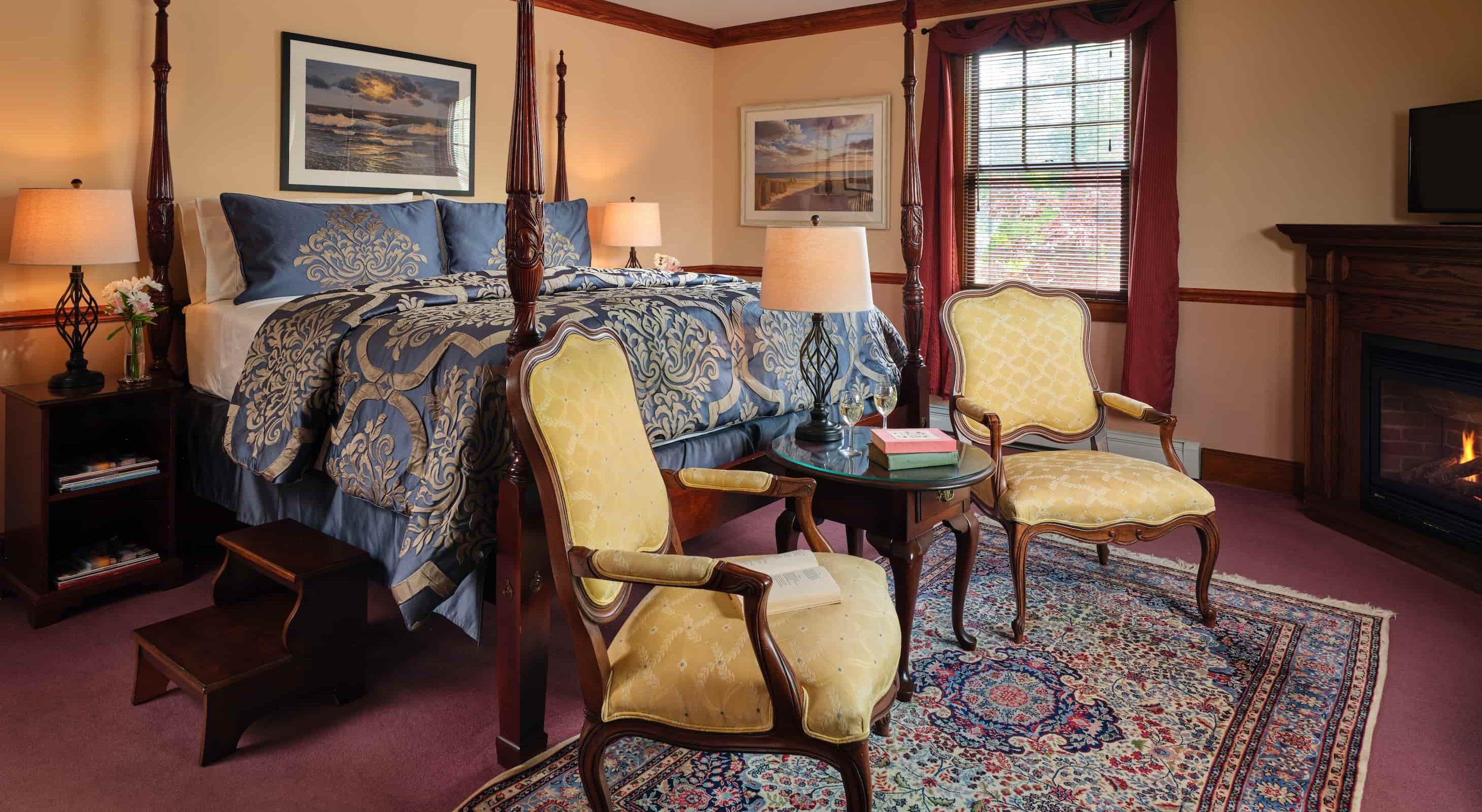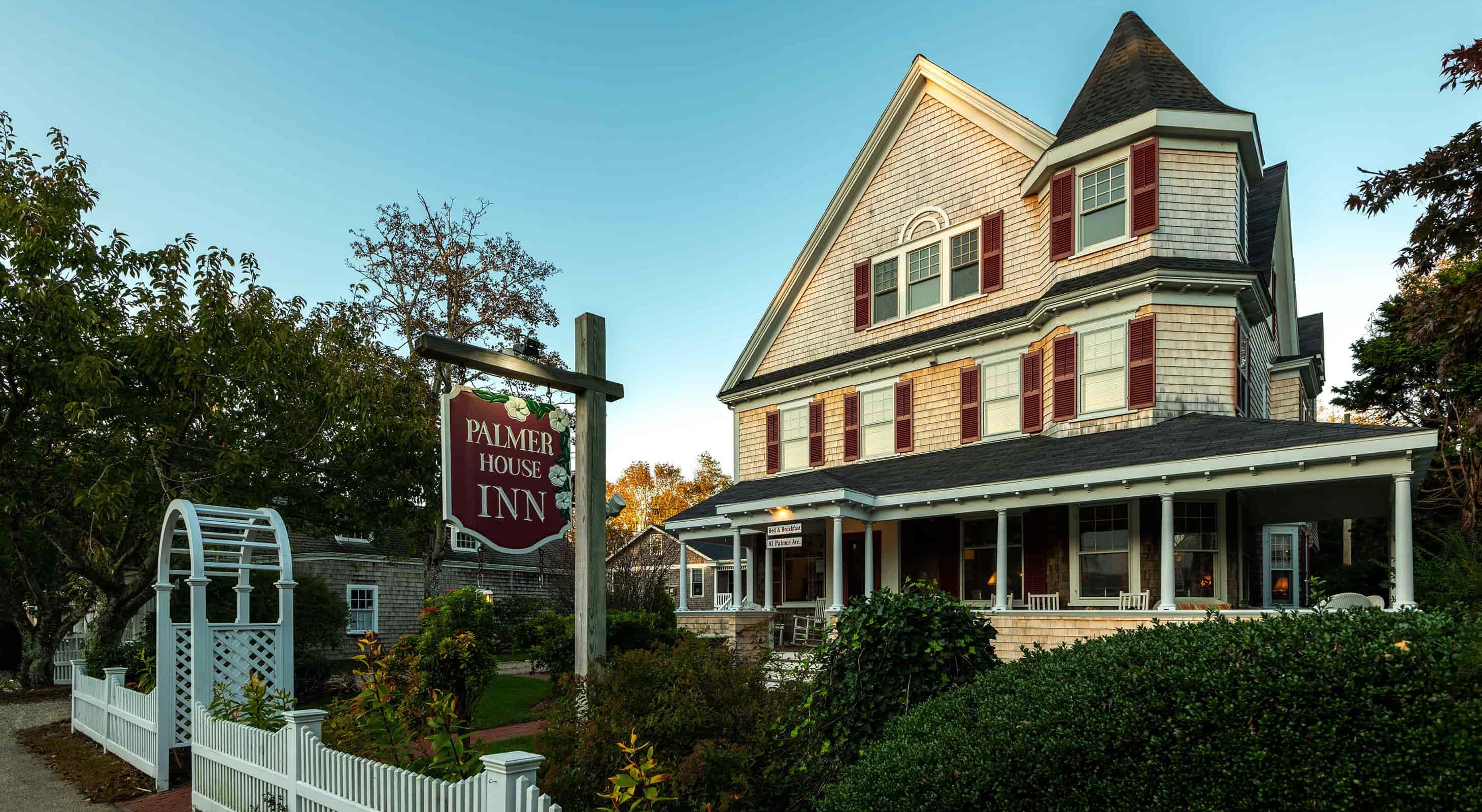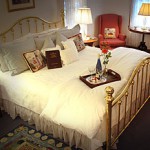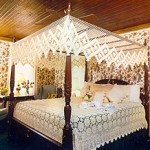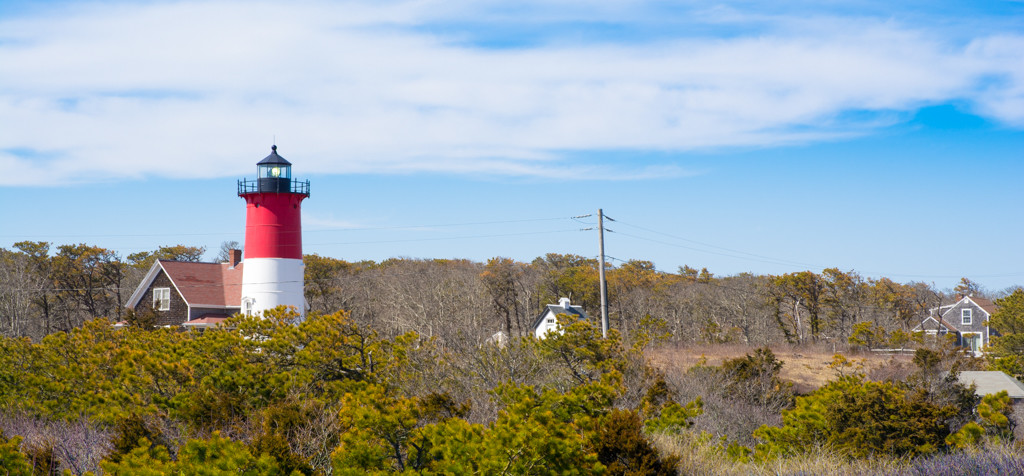
Nauset Lighthouse
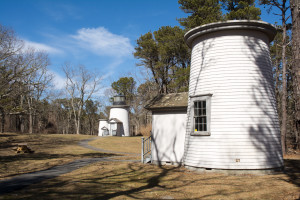
Three Sisters Lighthouses
In 1836, Eastham locals approached the Boston Marine Society about building a lighthouse in the middle of Nauset coastline to help to guide shipping vessels to navigate through the dangerous waters. Nauset was once the name given to the area of land that stretched fifteen miles between what is now Brewster and Truro, two lower Cape Cod towns. The following year, in the spring of 1837, ten thousand dollars was appropriated to build a lighthouse station on Nauset Beach in-between the Highland Light in Truro and the Twin Lights in Chatham.
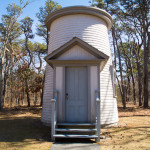
Lighthouse Door
In order to distinguish it from other locations, it was decided that there would be three light towers instead of one or even two as in Chatham. Construction of the towers was completed by Winslow Lewis. In thirty-eight days, Lewis finished the 15-foot cone shaped towers. The identical structures were positioned in a straight line with 150 feet of separation between each one. They were all equipped with fixed white lights. Lewis had also built a small, brick home for the keeper of the triplet set of lighthouses. The Lighthouses would soon earn the name “The Three Sisters of Nauset” because of an abstract resemblance to three women in white dresses wearing dark black hats.
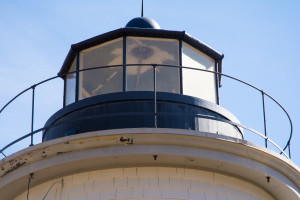
Three Sisters Lighthouse Light
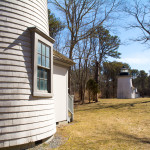
Lighthouse Window and Park
By the late 19th century, many changes would begin to occur to the Three Sisters Lighthouses. In 1873 authorization for an assistant keeper was put through along with the installation of fourth-order Fresnel lens, for the Sisters. A second home was then built on the property in 1876 to house the assistant keeper and have him closer to his duties. However, during these superficial changes to the lights and management, detrimental weather and erosion were forcing the three structures closer and closer to the water’s edge. Inevitably, the Three Sisters would either have to be moved or rebuilt to avoid the appetite of the angry sea. In 1892, three new 22-foot wooden towers were erected approximately thirty feet west of the Lighthouses original locations. However, the erosion continued to eat at the land and by 1911 the shoreline was only a mere eight feet from one of the towers. Rebuilding all three towers for a third time was deemed a waste of time, money, and effort so the decision was made that there would be only one lighthouse residing on Nauset Beach. After the towers were once again moved, the middle tower was chosen to shine on and it was attached to the original keeper’s house. The lone working lighthouse now flashed its white light three times every ten seconds into the open waters of the Atlantic Ocean.
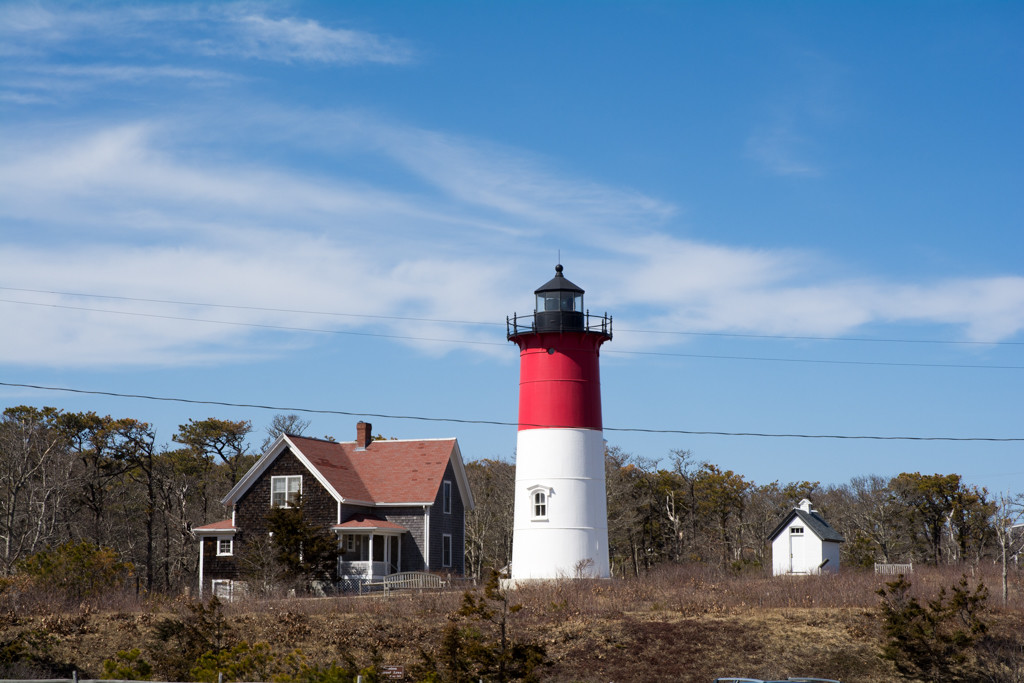
Nauset Lighthouse
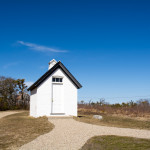
Nauset Lighthouse Out Building
In 1918, the two unused towers were purchased by the Cummings family for a grand total of $3.50. The family converted the structures into a summer home. During this time, the Chatham Light Station was also downgraded to one light. Chatham’s second light was then transferred to Eastham to replace the remaining wooden sister and act as the new Nauset Lighthouse. The last of the sisters was then sold for $10.00 and was converted into a private residence. The replacement tower, standing 48 feet tall and made of cast-iron, was given a makeover in the 1940’s to increase daytime visibility. It’s upper half was painted a rich red and the bottom half remained bright white, creating a memorable presence and ultimately a famous Cape Cod landmark. In 1955, The Coast Guard automated the light and sold the keeper’s house privately. The Lighthouse’s fourth-order Fresnel lens was then replaced in 1981 with aero beacons and the tower now flashed alternating red and white lights every five seconds. Today, one can see the old Fresnel lens on display at the Cape Cod National Seashore’s Salt Pond Visitor Center. Unfortunately, the new Nauset Light began to face complications with erosion, and after that threat it was decommissioned in 1993. At that time, the Nauset Light Preservation Society was formed. The society was given a five year lease on the Lighthouse and by 1996, the new site, far enough away from the water, was ready to house Nauset Light. In early 1997, the light was lit again.
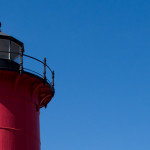
Nauset Lighthouse Light
After taking over ownership in 2001, the National Seashore came up with an agreement with the Nauset Light Preservation Society which allows the NLPS to continue to operate the light as a private aid to navigation. They are also responsible for all maintenance needed on both the tower and oil house.
Throughout the years, the National Park Service bought the entire set of the still-standing Three Sisters and by 1965 they were reunited on Cable Road. Restoration on the old landmarks began and upon completion in 1989, the new home for the Three Sister Lights was open for tours. The Three Sisters National Park site is now open to the public and tours of the towers are offered from the spring until the fall.
Nauset and The Three Sisters lighthouses are a pleasant hour and a half drive from the Palmer House Inn. The Three Sister’s site is a lovely location for a Cape Cod picnic.
While all of our rooms have their own individual charm suitable for relaxation after the most wonderful day of adventures exploring the historic lighthouses of Cape Cod, we recommend the Harriet Beecher Stowe room, the Theodore Roosevelt room or the Emily Dickinson room. These rooms feature comfortable king beds, fireplaces, jetted tubs and a relaxing stay before and after your day.
Mary Moran is a Falmouth native and knowledgable about Cape Cod. In addition to writing for the Palmer House Inn, she’s also frequently at the inn and available to answer quest’s questions. She enjoys reading, hiking, and spending time exploring Falmouth’s coastal waterways.
